
Clarendon Street Arcade was always a bold project: designing and fabricating five custom arcade cabinets intended to stand out and attract attention on the street, and that would remain on-site, 24/7, for two-and-a-half months.
The cabinets have now been in place, forming a trail along Clarendon Street in South Melbourne, for seven weeks. Staff from the Future Play Lab have been maintaining the cabinets, checking them regularly for damage and technical problems. But one of the biggest unknowns of the project was how the cabinets would hold up to the everyday challenges of the urban environment: rain, sun, birds (particularly their droppings), graffiti, vandalism and general wear and tear from public use.
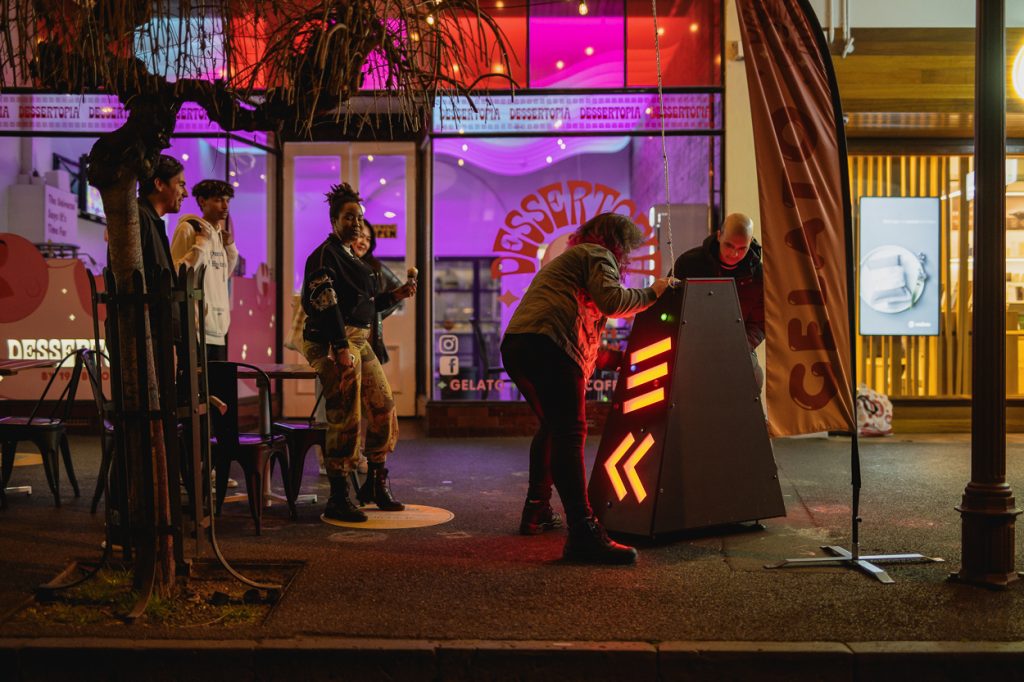
Two weeks ago, the first instances of intentional damage to the cabinets occurred. Someone smashed Musimoji‘s screen, and the acrylic protector covering it, destryoing them and rendering it inoperable. Jukebot was also punched or kicked, causing its acrylic exterior to collapse. The damage to both cabinets was discovered on August 27th after the Dessertopia store, outside of which Jukebot resides, reported Jukebot‘s damaged acrylic cover. Musimoji required extensive repairs and replacement, while Jukebot mostly only needed its paneling re-attached and several buttons replaced, which were handily stored inside the cabinet for incidents like this. Both cabinets are operational again at the time of writing.
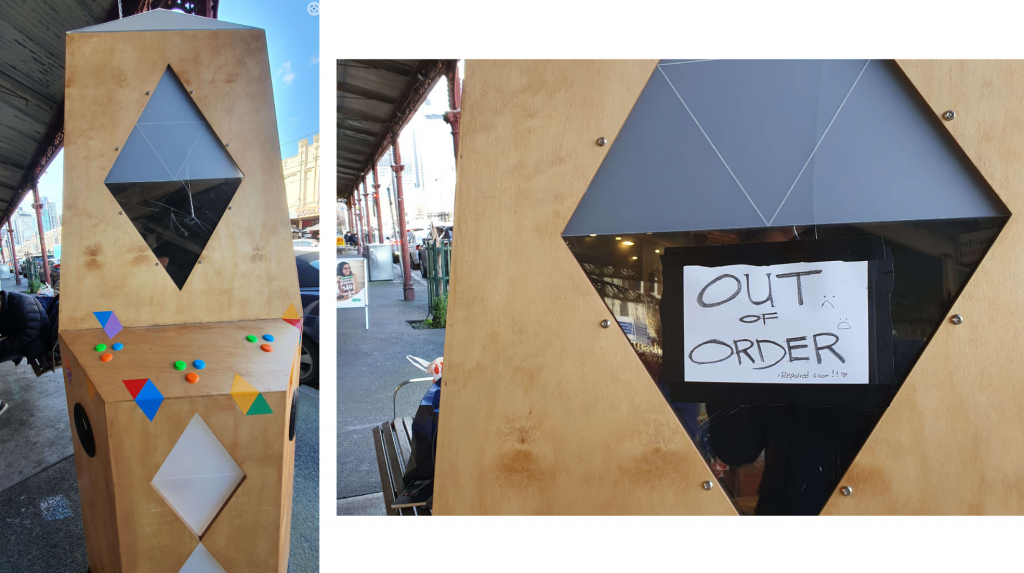
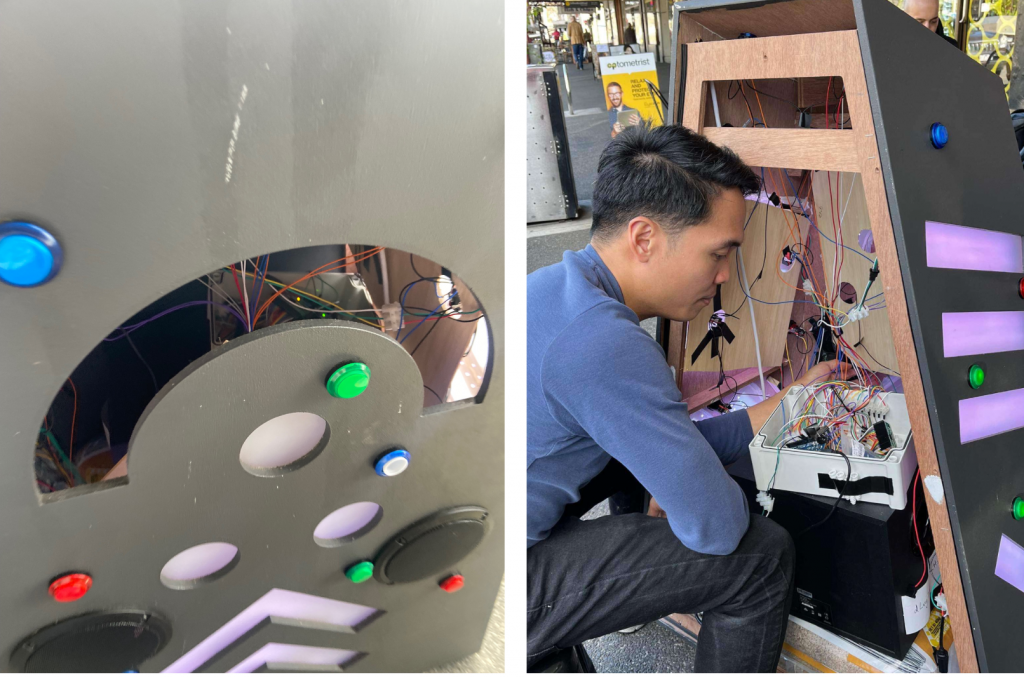
Apart from these instances of vandalism, the cabinets have suffered minimal external damage to date. The main issue for some cabinets has been water damage, with heavy rains particularly in August getting into the cabinets’ wiring, despite them being waterproofed and under covering. This has left them unplayable for short periods while they are fixed. Yawa‘s screen has also been overheating, likely due to direct sunlight shining on the cabinet, and the Future Play Lab team are considering installing fans to cool it down.
Jukebot has proven the most technically challenging cabinet. It has no screen, instead consisting of 24 buttons that are wired to an Arduino microcontroller. This executes the programs that cause the various lights to light up and the music to play, but it has proven inadequate and often crashes or fails to execute properly. It is in the process of being upgraded to new technology, like a Raspberry Pi, with the hope this will solve the problem.
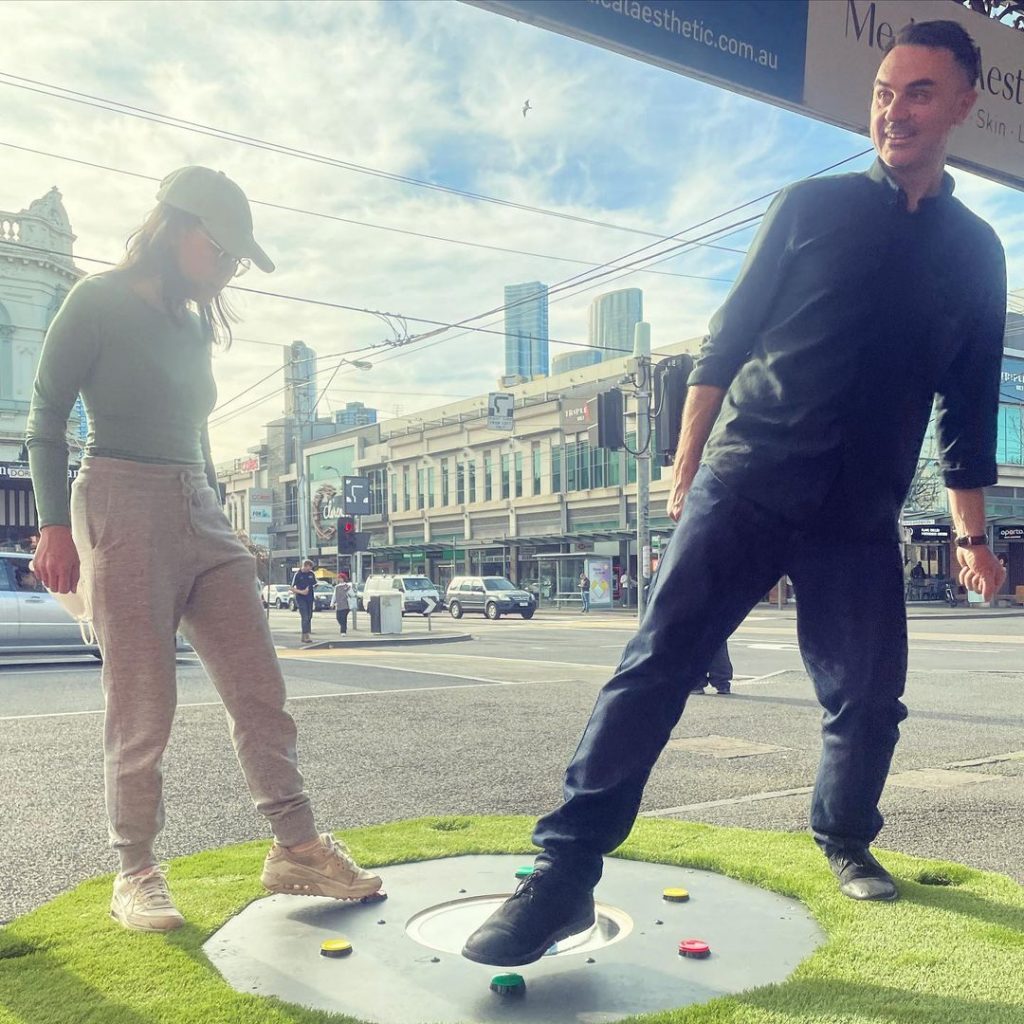
Other cabinets, like Yomeci Hole, have held up well to the weather and have not been intentionally damaged to date. One of its creators, Uyen Nguyen, says that residents nearby have even been “tending the hole”, picking up cigarette butts and other litter left on it. She and her co-designers often have to clean the screen, which gets dirty from rain splashes and people stepping on it. It has also had modem, screen and power issues that required it to be dismantled – no small task – and repaired, meaning it has had several days’ resting period.
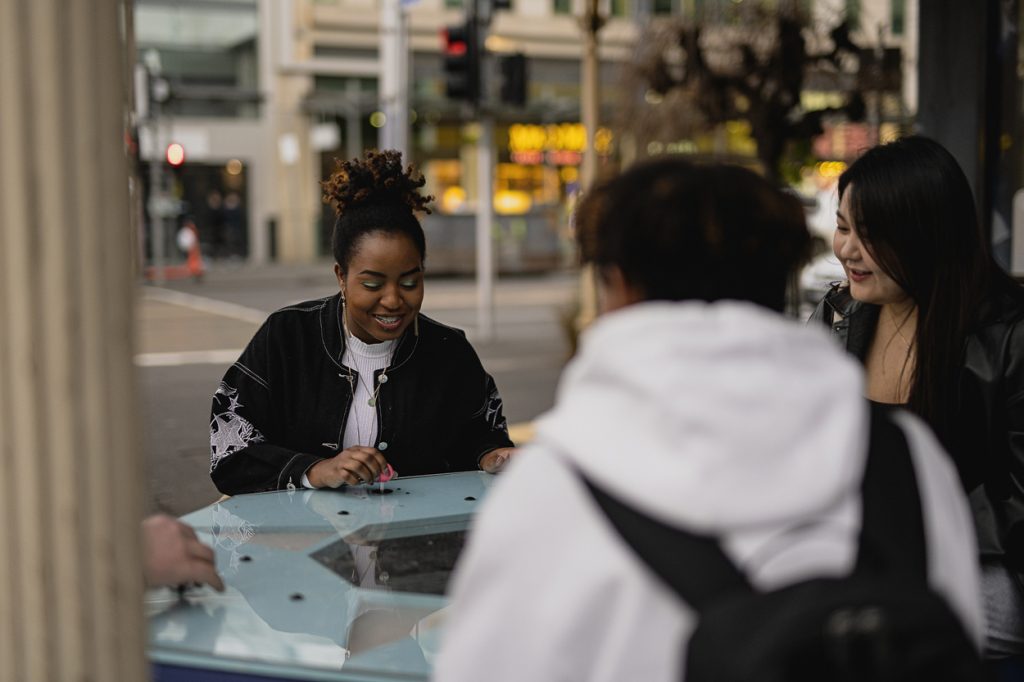
The cabinets are still on-site until at least October 9th, which is the end of Melbourne International Games Week. After then, they are likely to be relocated to RMIT campus which will allow Future Play Lab researchers and students to tinker with them more, and closer to home.
Dale Leorke is an embedded ethnographer in the Future Play Lab.
Update Sep 8th: this post was updated to add images from a recent photoshoot and include further details about the vandalism.
